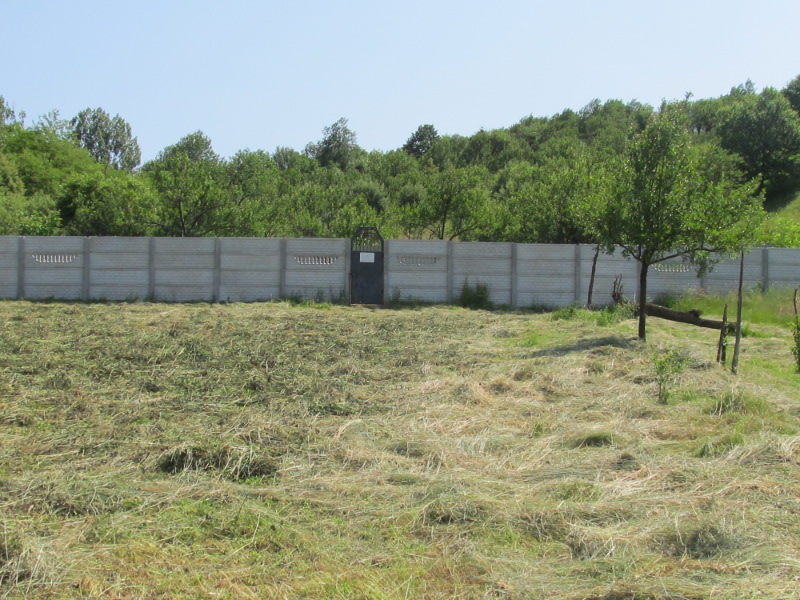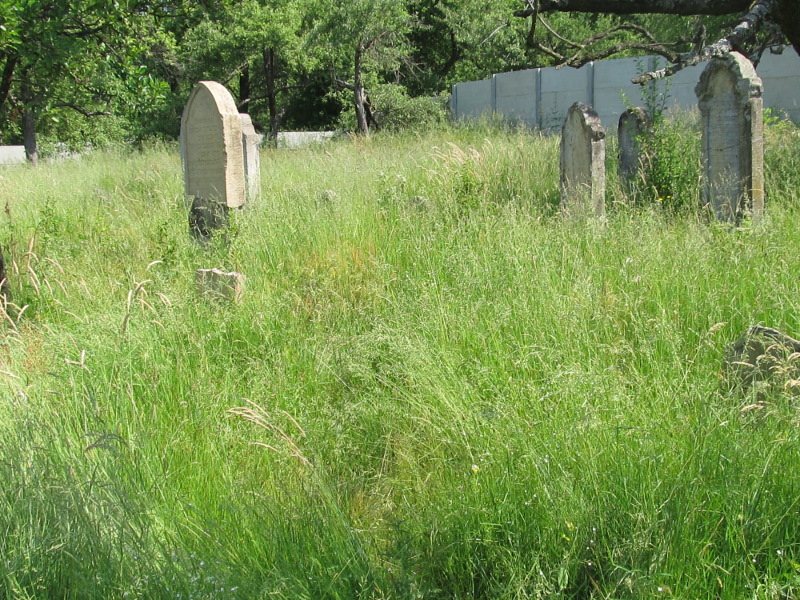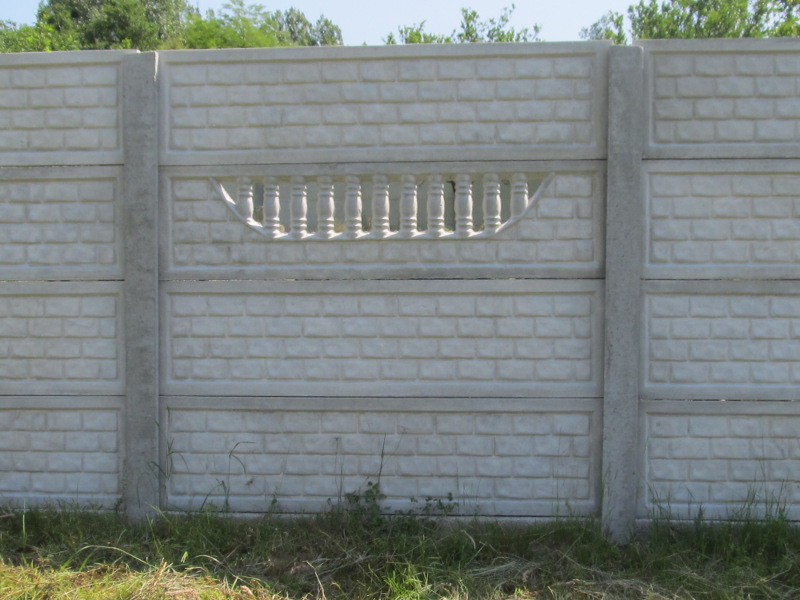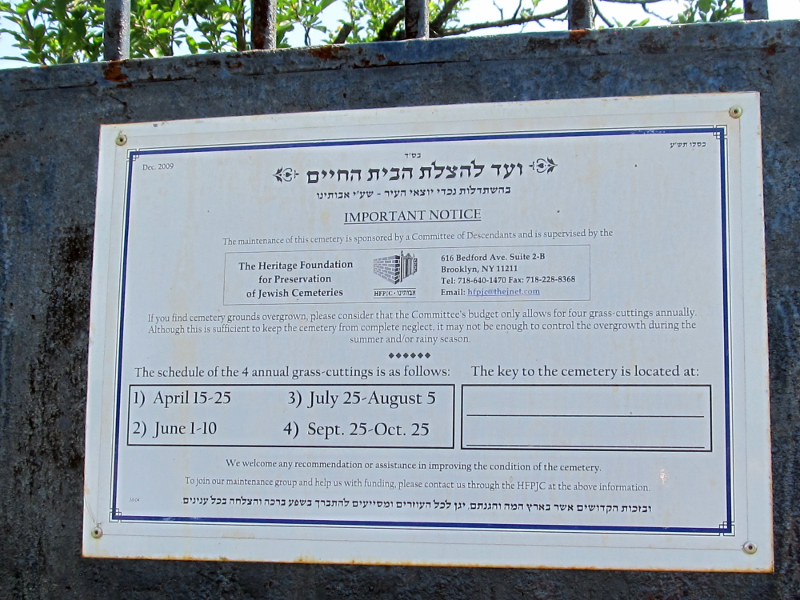Alternate names: Tîrşolţ [Rom], Tartolcz [Hun], Târşolţ. 47°57' N, 23°21' E. Târşolţ is a commune of 3,027 inhabitants composed of two villages, Aliceni and Târşolţ. At the 2011 census, 100% of inhabitants were ethnic Romanians. 62.2% were Greek-Catholic and 36% Romanian Orthodox.
- Pinkas HaKehilot, Romania, Vol. 2 (1980), p. 156: "Tarsolt"
- JewishGen Hungary SIG
- JewishGen Romania SIG
US Commission No. ROCE-0591 -
The cemetery is located in Tirsolt, 3922, judet Satu Mare, Romania at 4757 2321, 276.1 miles NNW of Bucharest and 15 km from Negresti Oas. The alternate name is Tartolc (Hungarian) and Tarsolt (Romanian.) Present town population is 1,000-5,000 with no Jews.
- Mayor Pop Grigore, Town Hall of Tirsolt, judet Satu Mare
- The Jewish Community of Satu Mare, Decebal Street no. 4A, 3900 Satu Mare, Romania, tel. 0040-61-713703
- The Federation of The Jewish Communities of Romania, Sfintu Vineri Street no. 9-11, sect. 3, Bucharest, Romania
- "Dr. Moshe Carmilly" Institute for Hebrew and Jewish History, Universitatii Street no. 7-9, room 61, 3400 Cluj-Napoca, Romania, Director: Ladislau Gyemant, This email address is being protected from spambots. You need JavaScript enabled to view it.
- "A.D. Xenopol" Institute of History, Lascar Catargi Street, no. 15, 6400- Iasi Judet Iasi, Moldavia , Romania. Tel. 032/212614; e-mail: This email address is being protected from spambots. You need JavaScript enabled to view it.. Director: Alexandru Zub.
- Key holder and caretaker: Solomes Nicolae, Tirsolt, no. 687
The 1880 Jewish population by census was 87, by 1900 census was 124, and in 1930 was 123. In May 1944, the Jews were gathered in the ghetto of Satu Mare and on May 19, 22, 26, 29, 30, 31, and June 1 were deported to Auschwitz. The unlandmarked Orthodox, Hasidic cemetery was established in second half of the 19th century. Last known burial was inter-war period.
The hill and hillside, separate but near other cemeteries, has no sign or marker. Reached via private property, access is open with permission. A fence with a non-locking gate surrounds the site. Approximate pre-WWII size is unknown. Approximate post-WWII size is 58 x 22 m. 20-100 stones are visible, not in original location. 50%-75% of the stones are toppled or broken. Location of stones removed from the cemetery is unknown. Water drainage is good all year.
The oldest known gravestone dates from second half of the 19th century. The 19th and 20th century marble, granite, limestone, sandstone, and concrete flat shaped and smoothed and inscribed gravestones have Hebrew inscriptions. No known mass graves. The local Jewish community owns the property used for Jewish cemetery and orchard. Adjacent properties are in village residential setting with houses, gardens, orchards, and pastures. Rarely, private Jewish or non-Jewish visitors stop.
The never vandalized cemetery maintenance has been cleaning stones and clearing vegetation. Current care is regular unpaid caretaker. No structures. Weather erosion is a moderate threat.
Claudia Ursutiu, Pietroasa Str. no. 21, 3400 Cluj Napoca, Romania, tel. 0040-64-151073 visited the site and completed the survey in July 2000 using the following documentation:
- Recensamantul din 1880. Transilvania (1880 Transylvania Jewish Population Census.) coord.: Traian Rotariu, Cluj 1997.
- Recensamantul din 1900. (1900 Transylvania Jewish Population Census) coord.: Traian Rotariu, Cluj, 1999
- Recensamantul general al populatiei din 29 decembrie 1930 (The General Census of the Population from December 29, 1930), vol. II, Bucuresti 1938
Recensamintul general al populatiei din Romania din 7 ianuarie 1992 (The General Census of the Population of Romania from January 7, 1992), vol. I, Bucuresti, 1994 - Zsido Lexicon, ed. by Ujvari Peter, Budapest, 1929
- Carmilly-Weinberger, Moshe. History of the Jews of Transylvania (1623-1944), Bucuresti, 1994, in Romanian
- Izvoare si marturii referitoare la evreii din Romania (Sources and Testimonies on the Jews in Romania), vol. III/1-2, coord. L. Gyemant, L. Benjamin, Bucuresti, Ed. Hasefer, 1999
- Ladislau Gyemant, Evreii din Transilvania in epoca emanciparii, 1790-1867 (The Jews of Transylvania in the Age of Emancipation 1790-1867), Bucuresti, ed, Enciclopedica, 2000
- Coriolan Suciu, Dictionar istoric al localitatilor din Transilvania (The Historical Dictionary of Localities in Transylvania), vol. I-II, Bucuresti, 1967
- Otto Mitelstrass, Historisch-Landeskundlicher Atlas von Siebenburgen, Ortsnamenbuch, Heidelberg, 1992
- Microsoft Auto Route Express 1999
Claudia and Adrian Ursutiu interviewed Solomes Nicolae, Tirsolt. [January 2003]
[UPDATE] 5 June 2015, I visited the Jewish cemetery at Tarsolt (aka Tirsolt) Romania, (47-57x23-21). I was accompanied by Mr. Paul Decsei, serving as my driver and interpreter (substituting for his father Mr. Nicolae Decsei, the guide for my trip), and Mr. Ioan Bojani, the Hebrew cemetery administrator for Satu Mare County. As the cemetery is located at the rear of private property, upon arrival we loudly announced our visit and sought the adjacent home that fronts of the highway. The elderly man who serves as the local caretaker of the cemetery came out of his house. The cemetery is enclosed by a concrete perimeter wall composed of concrete posts and prefabricated decorative concrete wall panels that was erected in early 2014 by HFPJC/Avoyseinu [ This email address is being protected from spambots. You need JavaScript enabled to view it. ] of Brooklyn, N.Y. There is a gate in the wall and a plaque identifying the cemetery, the role of Avoyseinu and the annual maintenance/mowing schedule. After entering by the gate, interior restoration work was confirmed by some gravestones setting on recent concrete bases. Although the grass was tall, the gravestones were clearly visible and not covered by plant growth. One gravestone is a serious candidate to be the resting place of my maternal great-grandfather, Abraham Izsak. Upon exiting the cemetery, we closed the gate and had a brief conversation with the local caretaker. I gave him a modest payment to express my appreciation for his efforts. Allen Hausman, JG researcher 14033 Alexandria, Virginia USA [June 2015]
Photos courtesy This email address is being protected from spambots. You need JavaScript enabled to view it. [June 2015]



